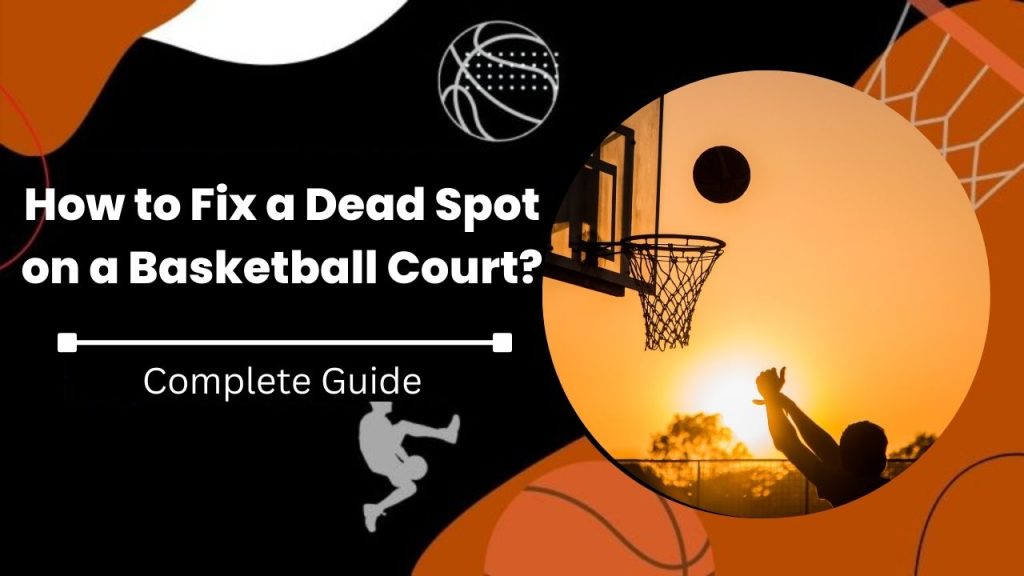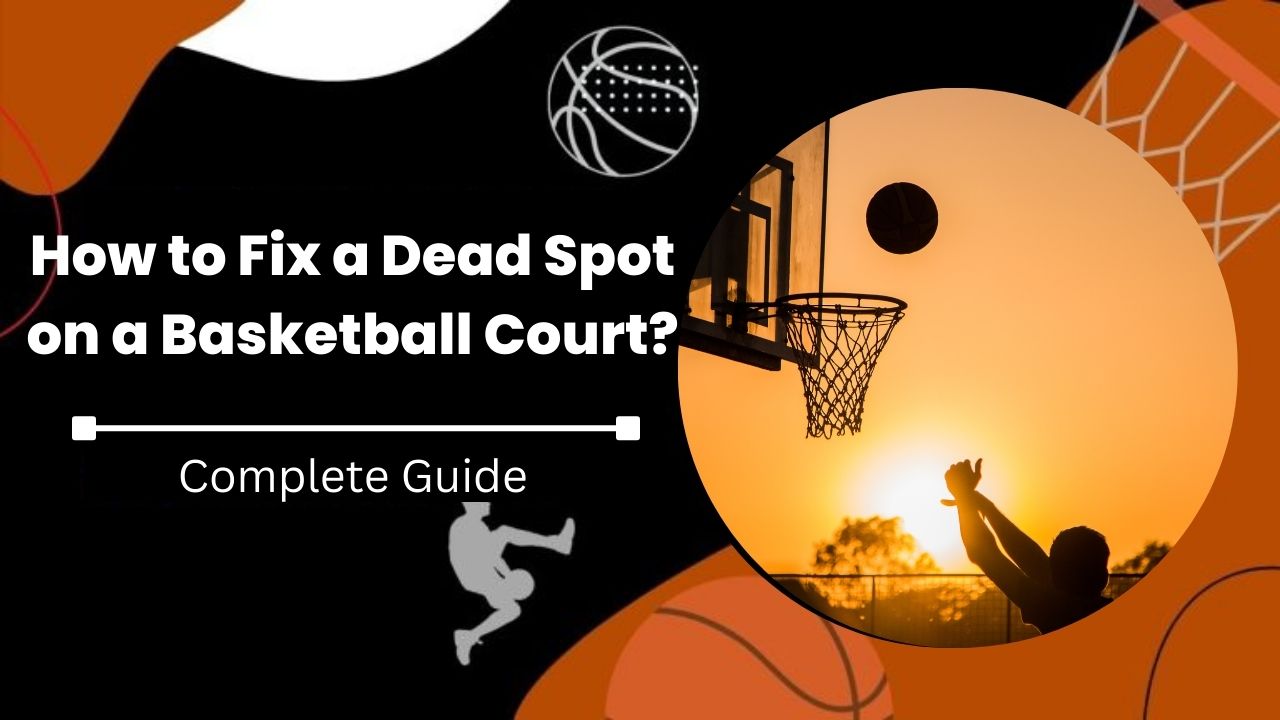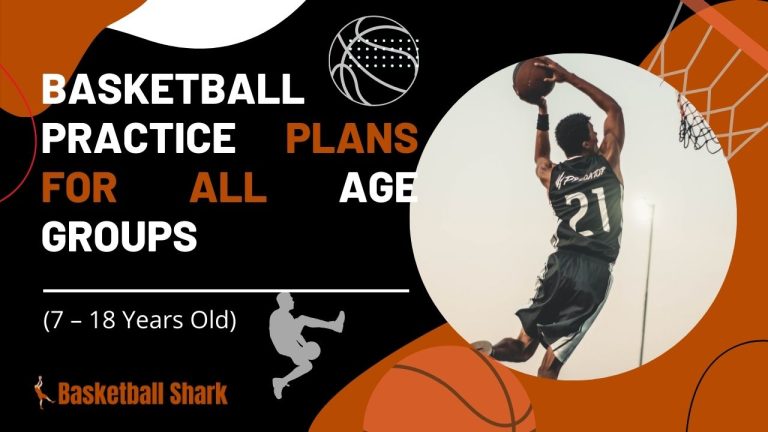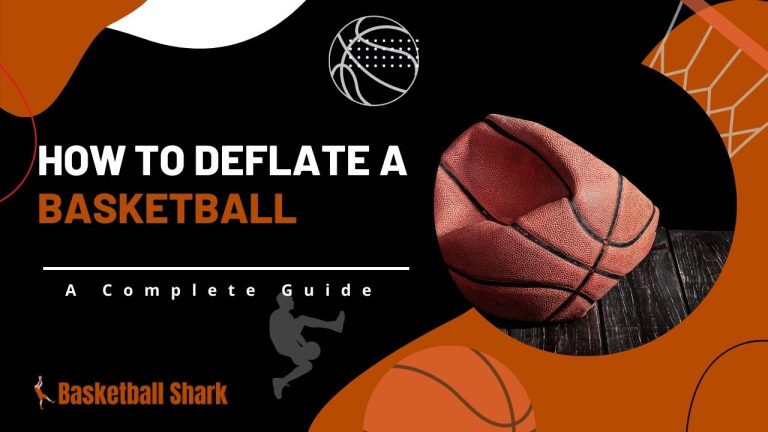How to Fix a Dead Spot on a Basketball Court | Expert Tips
Basketball, a beloved sport embraced by millions, thrives on smooth gameplay. Yet, dead spots on the court can disrupt the flow and impact the game. Understanding how to rectify these spots is crucial for players, coaches, and court maintainers alike.

How to Fix a Dead Spot on a Basketball Court?
A dead spot on a basketball court is an area where the rebound height is significantly different from the rest of the court, often resulting in a less responsive bounce when players attempt to rebound the ball.
Dead spots can be caused by various factors, such as low spots in a concrete slab, moisture incursion, or improper installation of the flooring system.
To fix a dead spot on a basketball court, consider the following steps:
- Identify the cause: Determine the underlying cause of the dead spot, such as a low spot in the concrete slab or moisture incursion.
- Repair the issue: Depending on the cause, the repair process may involve leveling the floor, addressing moisture incursion, or ensuring proper installation of the flooring system.
- Monitor the floor: Keep an eye on the repaired area to ensure that the issue is resolved and does not recur.
- Consider court maintenance: Regularly maintain the basketball court by checking for any signs of wear or damage, and addressing them promptly to prevent the formation of dead spots.
It is essential to address dead spots on a basketball court to ensure consistent gameplay and prevent injuries to players. If you are concerned about the condition of a basketball court, consult with a professional or the court’s manufacturer for guidance on identifying and repairing dead spots.
What causes dead spot in basketball court?
A dead spot in a basketball court is an area where the rebound height is significantly different from the rest of the court. This can be caused by various factors such as changes in the flooring’s humidity and moisture levels, low spots in a concrete slab, improper installation, or defects in the pavement.
Dead spots can affect the game as they lead to a loss of momentum when the ball is bounced, impacting the overall athletic performance on the court
What is a dead spot court?
A dead spot on a basketball court refers to an area where the rebound height is significantly different from the rest of the playing surface.
These spots can be caused by various factors, such as defects in the pavement, air bubbles beneath the surface, or issues with the floor’s design. Dead spots can affect the performance and safety of the court, as they can lead to abnormally low or high rebound levels.
Some key points about dead spots include:
- Perception: Players often perceive dead spots as areas with lower rebound height, and research has shown that the tone or sound produced when the ball bounces on these spots has a higher correlation with players’ perceptions than the actual rebound height.
- Definition: A dead spot can be defined as an area where the rebound height is significantly different from other areas on the playing surface. This definition helps create a common understanding among all parties involved.
- Significantly Different: The term “significantly different” is subjective and can vary depending on the context. In some cases, a rebound level 10% or more below the maximum can be considered severe and warrant repair.
- Floor Design: Some floor designs may feel “dead” overall, but if they are uniformly consistent, they don’t have dead spots.
To confirm the presence of a true dead spot, specialized equipment and testing methods can be used, such as the Portable Uniform Rebound (PUR) test, which measures ball rebound performance and compares it to a concrete floor as a base measurement.
How do I make my basketball court grippy?
To make your basketball court grippy, you can use anti-slip paint or coatings specifically designed for athletic courts. These products help improve the safety and performance of the court by providing a non-slip surface.
Here are some options and tips to consider:
- Choose the right product: Use a non-slip sports paint coating that is designed for outdoor courts, such as Dura Grip High-Performance Non-Slip Epoxy Paint. This type of paint contains suitable particles that provide just the right amount of traction.
- Prepare the surface: Ensure the surface of your basketball court is clean and dry before applying the paint. This may involve removing dirt, debris, and moisture.
- Apply the paint: Follow the manufacturer’s instructions for applying the paint to your basketball court. This may involve using a roller, brush, or sprayer to apply the coating evenly and according to the product’s specifications.
- Allow the paint to dry: Let the paint dry completely according to the manufacturer’s instructions. This may vary depending on the specific product and weather conditions.
- Maintain the court: Regularly clean and maintain your basketball court to prevent it from becoming slippery. This may involve dust mopping, wiping up spills, and using appropriate cleaning products.
- Consider additional traction methods: If you want to enhance the grip of your basketball court, you can also look into using a grippy substance like sand or a tacky substance like wax. However, be aware that these methods may need to be reapplied periodically and may not be suitable for all court surfaces.
Remember to always follow the manufacturer’s instructions for the specific product you choose and consult with professionals if you are unsure about any part of the process.
What is a dead spot in basketball court?
A dead spot on a basketball court refers to an area where the rebound height is significantly different from the rest of the playing surface. These spots can be caused by various factors, such as low spots in a concrete slab, moisture incursion, or improper installation of the flooring system.
Dead spots can affect the performance of the basketball, as they can cause the ball to have a lower rebound height than expected, which may lead to injuries for players.
Some characteristics of dead spots include:
- Rebound height: Dead spots are areas where the rebound height is 10% or more below the maximum, which is considered severe and warrants repair.
- Vibrations and sound variations: Areas with vibrations and sound variations are often mistakenly termed “dead spots”.
- Uniformity: Floating floors often exhibit sound and vibration variations due to the structure of the subfloor, seasonal changes in flooring moisture contents, and resulting system expansion/contraction.
To confirm the presence of a true “dead spot,” the ball’s rebound must maintain a 93% minimum average on a permanent PUR-compliant basketball floor, and a portable PUR Compliant basketball floor must maintain a 95% minimum average.
If a true “dead spot” is identified, it can be repaired or replaced to improve the performance of the basketball court and prevent potential injuries to players.
Stats and Facts
| Fact | Statistic |
|---|---|
| NBA regulations mandate court dimensions | 94 feet in length, 50 feet in width |
| Average lifespan of an indoor court surface | 10-15 years |
| Common materials for basketball court surfaces | Hardwood, asphalt, concrete, and rubber |
| Dead spots can hinder player performance | Reducing shooting accuracy and ball control |
Solutions and Techniques
1. Surface Maintenance
Routine checks and maintenance significantly prolong a court’s lifespan. Regularly sweeping, cleaning, and resurfacing can mitigate dead spots caused by wear and tear.
2. Surface Repair
Utilizing professional services or DIY methods such as sanding, filling cracks, or refinishing can rectify localized dead spots.
As a former basketball coach, I encountered dead spots on our home court. Regular maintenance and quick repairs were our team’s mantra. We engaged in weekly surface checks and promptly fixed any identified issues.
Read More:
- How Many Basketball Courts Can Fit in a Soccer Field?
- Do Basketball Players Shave Their Legs?
- Are Basketball Shoes Good for Netball?
- Are Nike Air Forces 1 Good For Basketball?
- Are Basketball And Volleyball Shoes The Same?
Effective Strategies
Exploring multiple resources for court maintenance, including external links to reputable sources like the NBA Court Standards, can provide a comprehensive understanding of court care.
Transitioning between these strategies seamlessly can ensure a consistently smooth court surface, improving gameplay for players of all levels.
External Resources:
In conclusion, rectifying dead spots on a basketball court demands a blend of proactive maintenance and effective repair techniques. By implementing these strategies, players can enjoy a more consistent and reliable playing surface, enhancing their overall basketball experience.
Remember, maintaining the court is not just a duty; it’s a commitment to the sport’s integrity and the enjoyment of all who step onto it.



